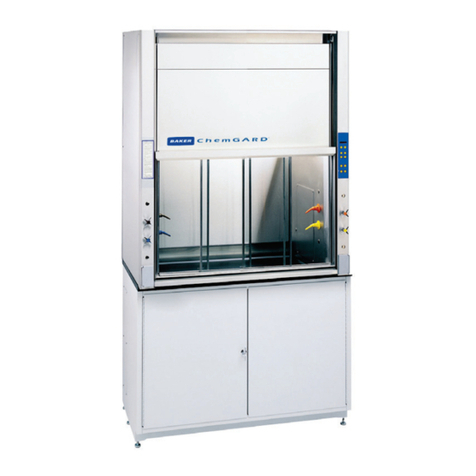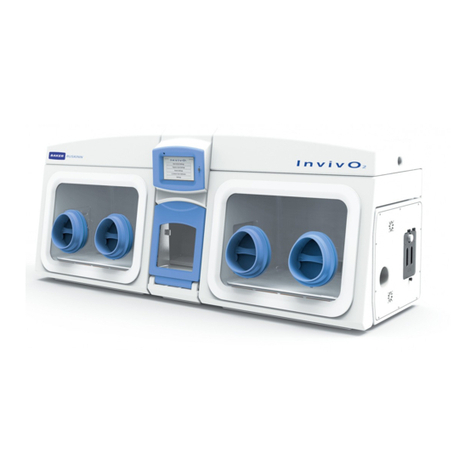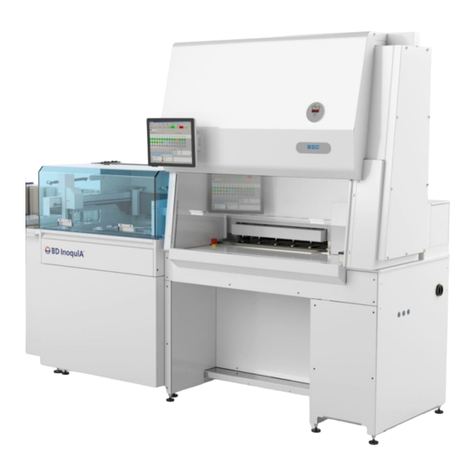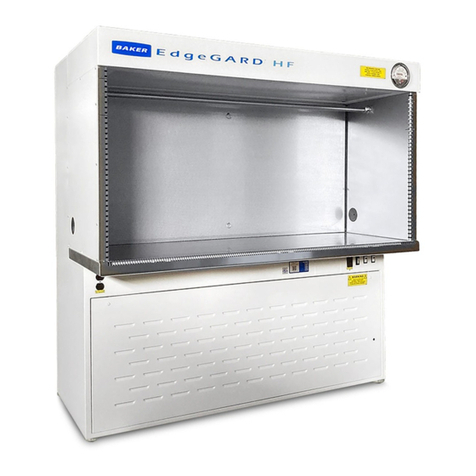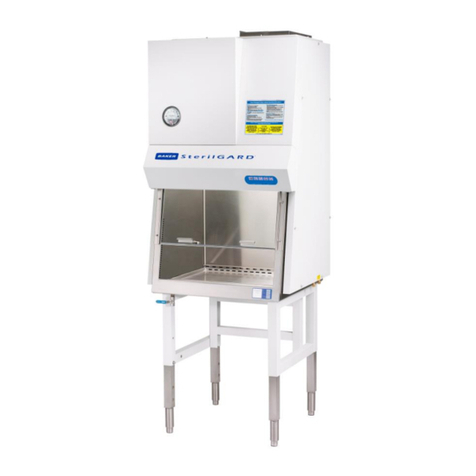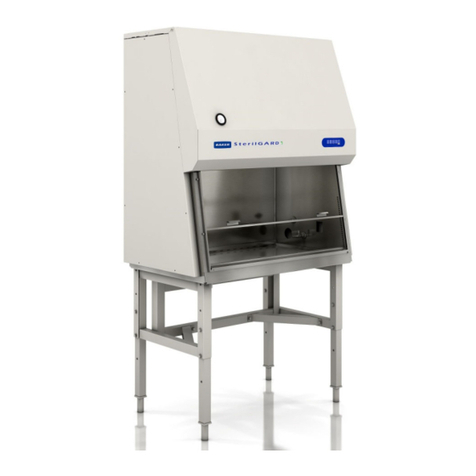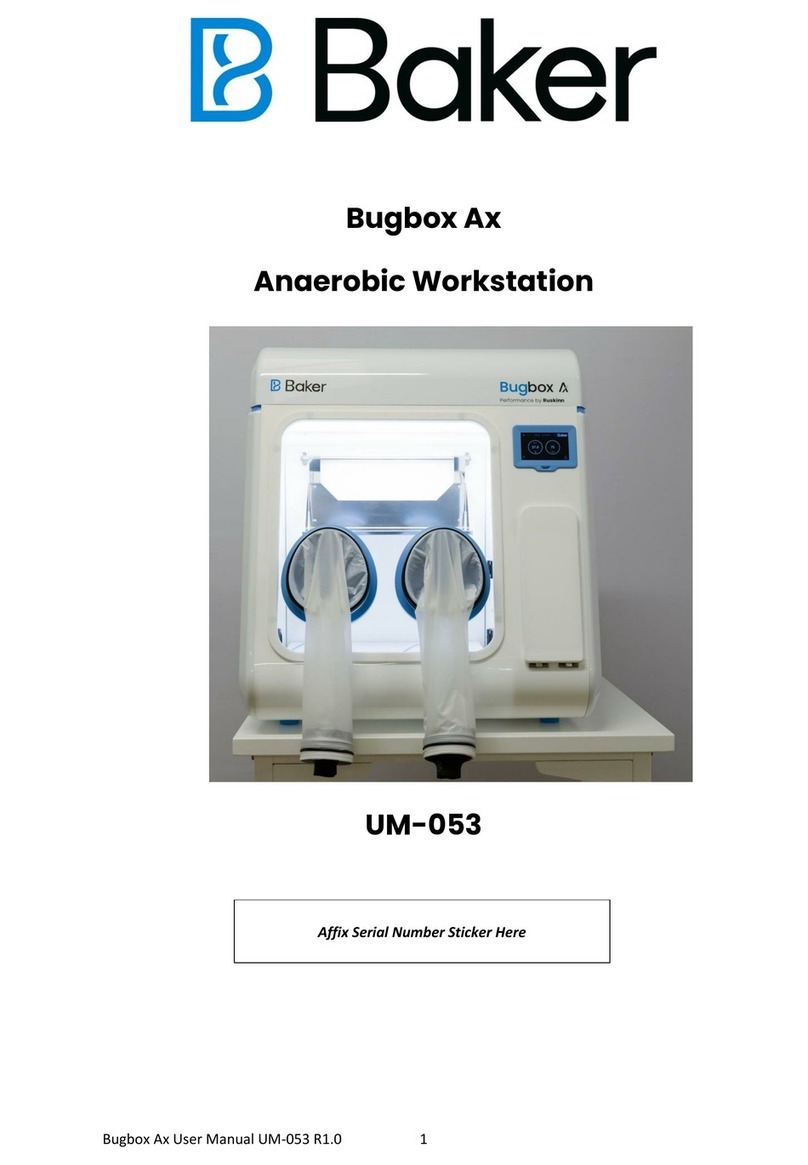
P.O.DrawerE/161GatehouseRoad/Sanford,Maine04073/USA
389D000 Rev B iii
TABLE OF CONTENTS
I – FUNCTION OF THE SterilGARDe3...................................................................................................1
II - CABINET DESIGN...................................................................................................................................2
Standard Features....................................................................................................................................3
Cabinet Primary Function.................................................................................................................................................3
Applicable Standards........................................................................................................................................................3
Cabinet Pressure Plenums.................................................................................................................................................3
Motor/Blower Capacity, Cabinet Supply Blower.............................................................................................................3
Manual Air Balance..........................................................................................................................................................3
Cabinet Filters ..................................................................................................................................................................3
Easy Filter Access ............................................................................................................................................................3
Work Area Design............................................................................................................................................................3
Front Access High Velocity Air Slots ..............................................................................................................................3
Towel Guard.....................................................................................................................................................................4
Work Surface....................................................................................................................................................................4
Drain Pan..........................................................................................................................................................................4
View Screen......................................................................................................................................................................4
View screen Access Opening ...........................................................................................................................................4
Work Area Lighting..........................................................................................................................................................4
Electronic Ballast..............................................................................................................................................................4
Ground Fault Circuit Interrupter (115V only)..................................................................................................................4
Laboratory services...........................................................................................................................................................4
Alarms ..............................................................................................................................................................................4
Timers...............................................................................................................................................................................4
Padded Bypass Armrest....................................................................................................................................................5
UniPressure™ Plenum......................................................................................................................................................5
Motor/Blower Assembly ..................................................................................................................................................5
Cable Port.........................................................................................................................................................................5
ReadySAFE™ Mode........................................................................................................................................................5
Power/Processor Fault Alarm...........................................................................................................................................5
Optional Features.....................................................................................................................................6
Adjustable Cabinet Stand .................................................................................................................................................6
IV Bar...............................................................................................................................................................................6
UV light............................................................................................................................................................................6
Floor and Wall Seismic Anchoring ..................................................................................................................................6
FlexAIR™ Canopy Exhaust Connection (CEC) ..............................................................................................................6
Digital Display Package Option (DDP)............................................................................................................................6
Auxiliary Wiring Options.................................................................................................................................................6
III - PROPER CABINET USE.......................................................................................................................7
Operation and Controls...........................................................................................................................7
Blower..............................................................................................................................................................................7
Fluorescent Light..............................................................................................................................................................8
Auxiliary Outlets ..............................................................................................................................................................8
Ultraviolet (UV) Light [Optional] ....................................................................................................................................8
Alarm Reset......................................................................................................................................................................8
Alarm Conditions.....................................................................................................................................9
Sash Alarm .......................................................................................................................................................................9
Power/Processor Fault Alarm...........................................................................................................................................9
Double Proximity Sensor Fault Alarm .............................................................................................................................9
Low-flow Exhaust Alarm.................................................................................................................................................9
Alarm Summary Table .....................................................................................................................................................9
Cabinet Timer Functions.......................................................................................................................10

